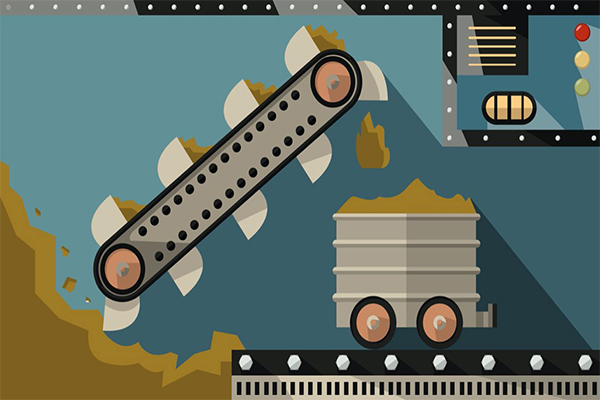How Does A Bucket Elevator Work?
Bucket elevators are conveyors that carry bulk materials along an inclined or vertical path. The bucket elevators for vertical and mechanical transportation of goods has become an important link in production processes for several industrial sectors.
The standard bucket elevator is made up of:
- - An endless belt
- - Round link Chain strands or a single chain strand that the bucket attaches to
- - Necessary discharging and loading terminal machinery
- - A drive arrangement
- - Supporting casing or frame
The Layout Of A Bucket Elevator - Bucket Elevator Parts
Materials are first fed into a type of inlet hopper. The cups or buckets dig into materials, which are then conveyed up and over a pulley or head sprocket, followed by throwing the materials out of a discharge throat. The empty buckets then continue this cycle by returning back to a boot.
The Industrial Bucket Elevators come in various sizes, weights, and shapes, using either continuous buckets or centrifugal buckets. The belt is usually made from metal, plastic, rubber, or natural fibers.
The Centrifugal Bucket Elevators are more commonly used for conveying free-flowing materials. These buckets operate at high speed to throw materials out of the buckets inside a discharge throat using centrifugal force.
Continuous Bucket Elevators operate at a slower speed and include buckets that are evenly spaced. The buckets' even placement lets gravity successfully discharge loads onto an inverted-front of a preceding bucket. These buckets will then guide the materials into a discharge throat along the elevator's descending side. This minimizes product damage or is used to handle fluffy, light materials whereby aeration of the materials needs to be avoided.
Bucket Elevator Round Link Chain And Belt Type
The motion of a chain or belt is un-directional. Bucket elevators are simple yet extremely reliable devices for lifting bulk materials. Bucket elevators share a few benefits, which include the simplicity of fabrication and design, the initial investment is low, and they require minimal floor space.
Bucket Elevator Types
In most cases, bucket elevators are grouped according to the discharge mode and the bucket "spacing." These include:
- - Centrifugal discharge elevators
- - Positive discharge elevators
- - Continuous or gravity discharge elevators
Bucket Elevator Components:
The main parts of a bucket elevator include:
- - Buckets
- - Boot arrangement
- - Carrying medium
- - Casings
- - Head arrangement
Bucket Elevator Round Link Chain Application
The types of materials that are typically conveyed by a bucket elevator include:
Foundry sand, Limestone crushed to 25 to 30mm sizes, Coal, Sugar, Coke, Chemicals, Animal feed, Phosphate rock, Friable, Cement mill clinker, Snacks, Candy, Fragile materials, Rice, Coffee, Seed, Detergents, Plastic granules, Soaps
Limitations Of Round Link Chain Bucket Elevators:
The limitations of these systems typically include the following:
- - The lump size must be under 100mm
- - The materials should have an ambient temperature or, in some cases, slightly above
- - The materials cannot be excessively abrasive or corrosive
The Benefits Of The Belt System Over The Round Link Chain System
The traction elements are either an endless chain or endless belt, but the belt systems are preferable for certain conditions due to these reasons:
- - Quieter operation
- - Higher speeds become possible
- - Offers improved abrasive resistance for materials such as coke or sand
(cited from: https://www.mechanicalengineeringblog.com/bucket-elevator-how-it-works/)
Post time: Feb-17-2022

